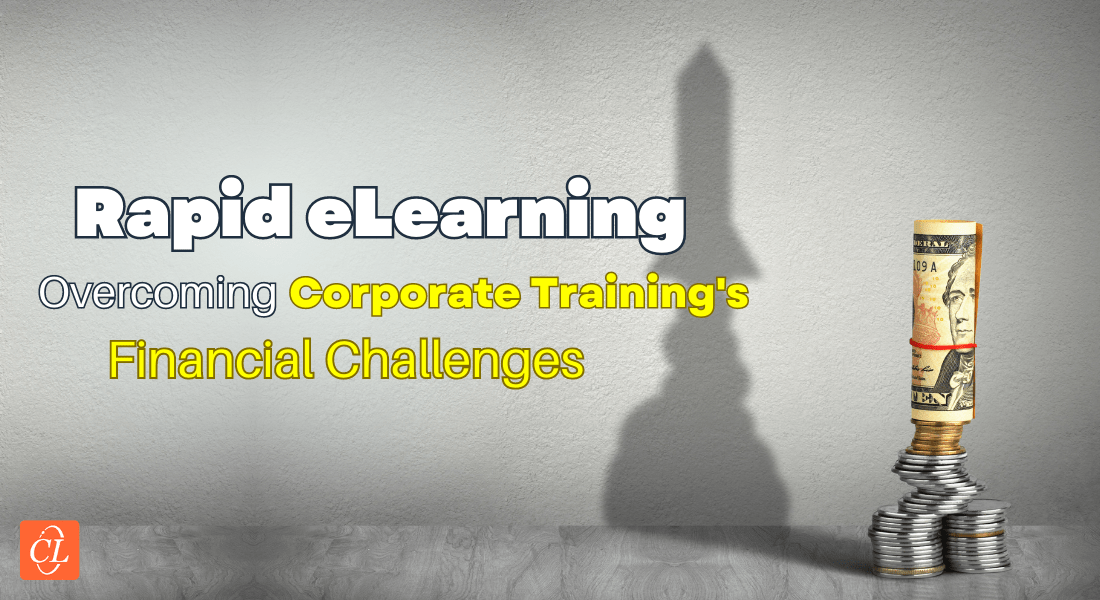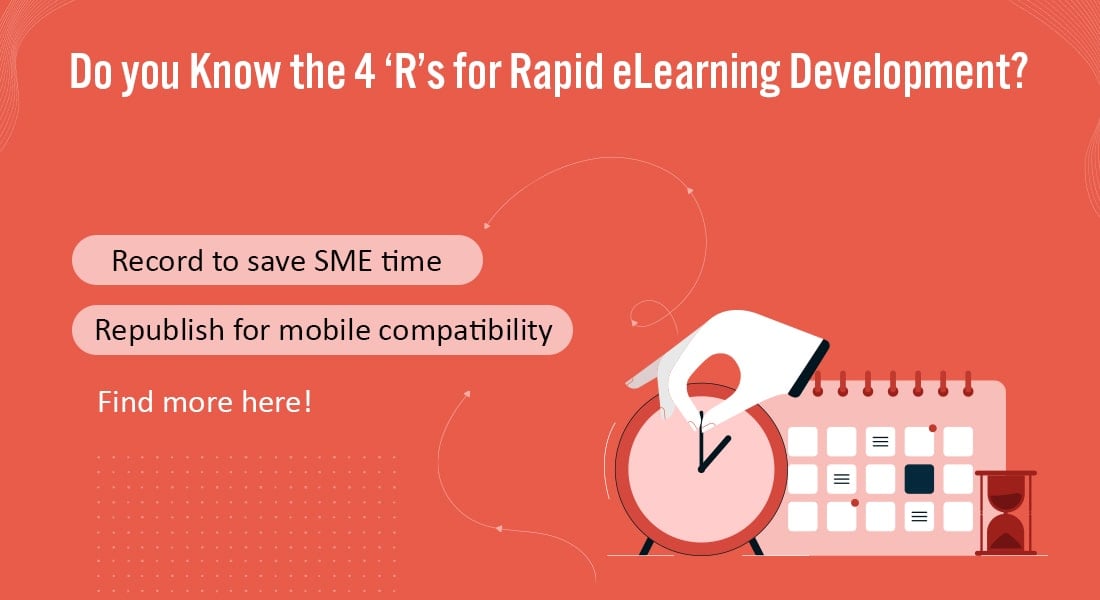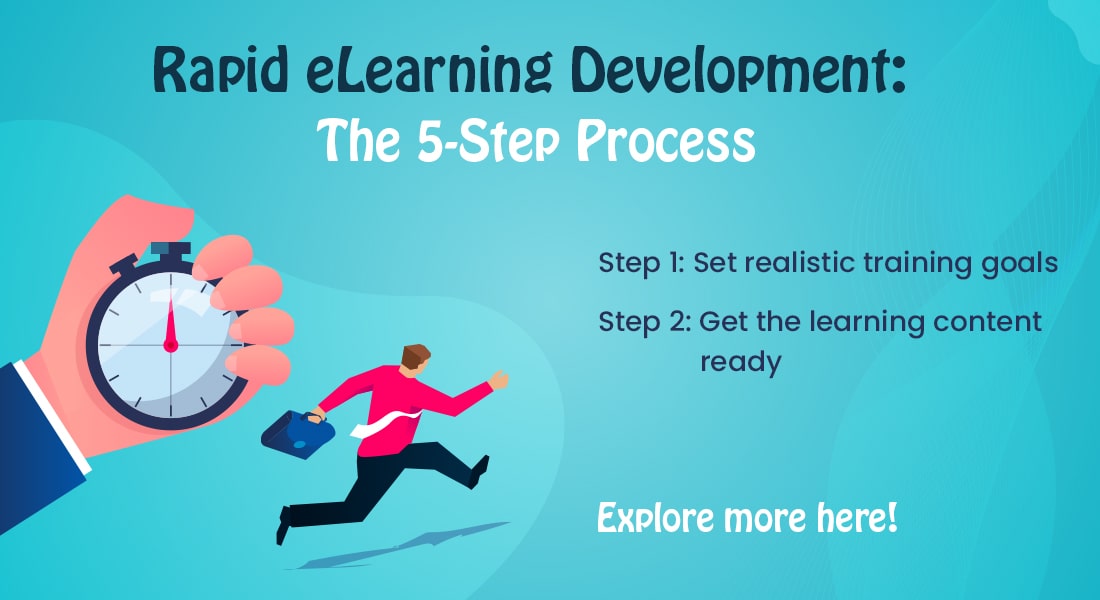4 Reasons Why Rapid eLearning is the Undisputed Champ of Corporate Training

Step aside McGregor! We have a new champion. The recent testing times have proven that rapid eLearning is the undisputed champion in the arena of corporate training. But why and how? That’s exactly what this blog is going to talk about – how rapid eLearning gets the champion’s belt in corporate training.
4 Traits that Make Rapid eLearning the Undisputed Corporate Training Champion
- Fast and budget friendly design and development – Rapid eLearning uses existing content, rapid authoring tools, and customizable predetermined templates for courseware creation.
- Quick conversion and translation solutions – Rapid eLearning can help convert classroom ILT (instructor-led training) to Virtual ILT, Flash courses to HTML5, and even provide multilingual translation.
- No compromise on quality – Rapid eLearning upholds course quality of traditional eLearning course, by following AGILE process of eLearning development.
- Support for all training types – Rapid eLearning supports all possible training types and needs.
Rapid eLearning has changed the entire eLearning geography, delivering fast business results by increasing employee efficiency and compliance – all that you as a training manager could have hoped for. It makes it possible to roll out critical courses within tight budgets and short timelines.
In this article, I have listed four features that make rapid eLearning the go-to training strategy for 2020.
Rapid eLearning, as the name itself suggests, is a process of efficient eLearning course design and development in the minimum possible time. It achieves that by:
- Standardizing common screens and elements
- Using pre-approved templates.
- Employing rapid authoring tools for quick development
- Utilizing AGILE project management
Contrary to common misconceptions, rapid eLearning is not a temporary solution for training gaps. In itself, rapid eLearning is a robust process that addresses major training needs. With COVID-19 showing no signs of departing anytime soon, 44% of global companies are going for eLearning and virtual employee training. Given that such a massive requirement cannot be met in-house, most organizations are looking towards eLearning vendors for outsourcing their corporate training courses.
But what makes rapid eLearning wear the champion’s belt with pride? Let’s find out, shall we?
Explore rapid eLearning – the secret to evolving at the speed of business.
4 Reasons Why Rapid eLearning is the Undisputed Corporate Training Champion
1. Enables Fast and Budget Friendly Design and Development
As I have said before, rapid eLearning comes into its own in the face of tight budgets and deadlines. Compared to conventional eLearning, rapid eLearning cuts course design and development time by almost 40%. This is achieved by:
- Using existing content: Rapid eLearning development primarily uses existing material (classroom and other resources) after it is checked for accuracy and relevance by the SMEs – PPTs, manuals, facilitator guides, etc. This speeds up the whole process as content is not created from scratch.
- Using rapid authoring tools: Rapid eLearning leverages a wide range of rapid authoring tools like Lectora, Adobe Captivate, iSpring, Elucidat, etc. (with their own pre-built templates) for course design and development.
- Avoiding the frills of conventional eLearning courses: Rapid eLearning is based on robust instructional design principles, and avoids the unnecessary bells and whistles of conventional eLearning courses. This makes the course creation easier on the budget.
- Using pre-defined templates: Rapid eLearning makes good use of the vast library of templates and standardized screen layouts that authoring tools offer. Using predetermined templates and elements for different screen layouts, assessments, interactivities etc. and customizing them as per the course requirements, significantly brings down the design and development time and cost.
2. Provides Quick Conversion and Translation Solutions
Corporate training for a multilingual global workforce, especially during the COVID-19 pandemic can be a taxing process. Rapid eLearning offers 3 solutions to help mobilize your stuck training wheels:
- Swift ILT to eLearning conversion: With conventional classroom Instructor Led Training rendered invalid with ‘social distancing’, eLearning and virtual training have come out as more viable options. Existing classroom training materials including PPTs, facilitator guides, and manuals can be converted to eLearning modules and uploaded to the LMS.
- Flash to HTML5 conversion: Each passing day brings us closer to the phase-out of Adobe Flash in December 2020. But that does not have to mean the end of your old Flash courses. Rapid eLearning development can be used to convert the vast library of legacy Flash courses to multidevice and multiplatform compatible HTML5 courses supported on any modern day LMS.
- Multilingual translation: Irrespective of the language in which the course was initially developed, rapid eLearning’s CAT (Computer Assisted Translation) or translation tools in different authoring tools, ensure that language does not become a barrier to employee training.

3. Does Not Compromise on Quality
Just because it’s ‘rapid’ does not mean it has to be sub-par. Rapid eLearning development follows the AGILE process of eLearning development, which by keeping the SMEs and stakeholders in the loop, ensures the entire development process proceeds smoothly with reviews and signoffs at important milestones.
4. Supports All Training Needs
Rapid eLearning can be used for all types of training including:
- Employee onboarding: Rapid eLearning, by bringing down course development time, ensures the best onboarding experience in the shortest time.
- Product training: Have a new product launch scheduled and want to train your employees on the same, but running short on time? Rapid eLearning can help you make the best out of this situation by providing you training solutions in a very short time.
- Compliance training: Quickly get done with the mandatory compliance courses for your employees with rapid eLearning.
Wrapping it Up!
There you go. You asked for a reason why rapid eLearning is the undisputed corporate training champion, I gave you four. Rapid eLearning focuses on the core content, is easy to develop and roll out, and uses pre-existing course material and authoring tool templates. This decreases development costs and helps boost training ROI by up to 50%, while also ensuring learning efficiency.
Sounds too good to be true? It is not. If you want to know more about rapid eLearning and how it can bring order to a potentially chaotic corporate training environment, you can check out this eBook on five best practices in rapid eLearning design for quick rollout.





